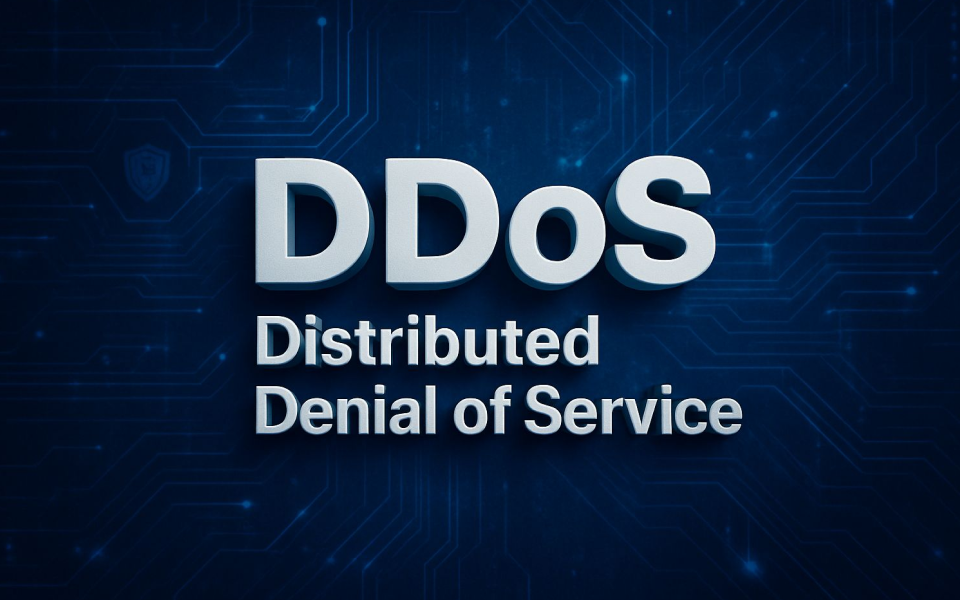
Unveiling the Rise of Employment Scam Emails Targeting Students
February 24, 2024
Cyber Attack on Philabundance — Account Takeover (ATO)
March 16, 2024What is Spoofing? Definition, Types, Prevention

Email spoofing has emerged as a dangerous element in cyberattacks, particularly against corporations. This deceptive technique involves fraudulent links, impersonation, and evolving threat methods, making it a formidable challenge for defense.
Cloudflare, a web service and security company, analyzed 250 million malicious emails sent over a year starting May 2022. Their findings revealed that over 35.6% of these emails—more than a third of all detected threats—contained fraudulent links. Clicking on such links exposes users to landing pages controlled by attackers, leading to credential theft, remote code execution, network damage, and other harms.
A notable tactic within email spoofing is domain spoofing, where cybercriminals create malicious domains that closely resemble those of legitimate organizations. This enables them to create email addresses that appear nearly legitimate.
Last year, domain spoofing for identity impersonation experienced significant growth, rising from 3.9% to 14.2% among detected threats. Microsoft was the most impersonated company, accounting for 9.9% of cases, closely followed by Boeing at 9.7%. The top 10 most frequently impersonated companies included the World Health Organization (WHO), Google, SpaceX, Salesforce, Apple, Amazon, and T-Mobile.
Cloudflare’s research highlights that brand impersonation targets highly popular companies, with 60% of email phishing incidents involving the impersonation of globally renowned brands. Similar domains are used to mimic legitimate entities, enabling various cyberattacks, including email spoofing.
1. What is Spoofing?
The term “spoofing” in the realm of IT refers to techniques designed to deceive victims by presenting false information or connections, all without directly infiltrating systems. It differs from phishing, which primarily exploits vulnerabilities, and sniffing, which involves intercepting information. Spoofing actively lures users into trusting and accepting inaccurate information.
In spoofing attacks, users are led to believe and access malicious sites or provide sensitive information to attackers based on false information or connections introduced by the attacker. What adds to the danger is the potential for more significant secondary damages, especially when combined with phishing. While phishing typically involves planting malware and waiting for a user to be deceived into connecting, spoofing presents phishing methods directly to users without easy detection, making it an especially nefarious attack strategy.
2. Principles and Types of Spoofing Attacks
Spoofing attacks are based on the exploitation of trust, where attackers mimic legitimate sources, leveraging the inherent trust that users or systems place in familiar entities. This can involve imitating email addresses, websites, network addresses, or even biometric data. The primary goals of spoofing attackers typically include stealing critical data, spreading malicious software, or bypassing access control.
The damages resulting from spoofing attacks are diverse, ranging from unauthorized access to critical information through data theft, delivery of harmful software to victim systems, and fraud via identity theft, to unauthorized access leading to network damage, direct financial theft, or indirect costs incurred through response to embezzlement. Spoofing can manifest in various forms, such as DNS spoofing, ARP spoofing, or IP spoofing, and may occur in combination.
Email spoofing is a prevalent tactic, constituting 90% of cyberattacks. Common email spoofing techniques involve attacks using similar email addresses, often leading to cascading URL phishing attacks. The main objective of email spoofing is to deceive recipients into believing that the email is from a trusted sender for malicious purposes. Attackers manipulate the sender address in the email header to appear as if it is sent from a reputable company, government agency, or a known colleague – a source the recipient trusts. This manipulation can result in phishing URL attacks, where users are tricked into clicking on malicious URLs and entering login credentials or other critical information. Therefore, effective solutions for identifying similar email addresses and countering attacks involving phishing URLs are crucial to prevent email spoofing.
3. Spoofing Attack Prevention and Solutions
- Communication Protocol Authentication Implement authentication protocols such as Sender Policy Framework (SPF), DomainKeys Identified Mail (DKIM), and Domain-based Message Authentication, Reporting, and Conformance (DMARC). These protocols verify the sender’s compliance, aiding in the detection of forged sender addresses. By ensuring adherence to these protocols, the authenticity of the sender can be verified, preventing the delivery of spoofed emails or messages.
- Data Encryption
Employ encryption techniques to safeguard the content of emails and attachments, ensuring that only the intended recipient can access the information. Key considerations include:
- Establishing clear conversion conditions for encrypted data.
- Reviewing the security risks of attached files.
- Encrypting external network path information within attachments.
- Reviewing URL information for potential threats.
- Users should be notified of the risk level of similarity when the sender’s domain is detected as a look-alike domain based on accumulated email history, and such emails should then be blocked.
- The character count difference in the email address should be used as a criterion for determining fraudulent look-alike email attacks.
- Discrepant Top-Level Domains (TLDs) should be managed separately.
- It is advisable for security managers to manually register suspicious email addresses that appear fraudulent.
- Implement a domain similarity calculation method that involves accumulating sender domains of inbound emails. Newly received emails can be compared and analyzed against these accumulated domains. Inbound emails are temporarily suspended or blocked when the Top-Level Domain (TLD) is modified, the order of the character string changes, or one of the characters is replaced with a visually similar character (homoglyph). It is not recommended to determine domain similarity based only on the difference in the number of characters.
- The final destination of URLs, particularly those containing web pages designed to elicit the entry of personal information, must be continuously tracked.
- URL Final Destination Tracking: All URLs should be tracked to their final destination to monitor the likelihood of them leading to sensitive information entry.
- HTML Source Code Analysis: Analyze the HTML source code of web pages to check for input boxes that prompt users to provide personal, identification (ID), or password information, and inspect whether the entered information is transmitted to a third-party server.
4. Conclusion
5. Reference
Security requirements and countermeasures for targeted email attacks
https://www.itu.int/ITU-T/recommendations/rec.aspx?rec=15710&lang=en
Key Takeaways from the 2023 Domain Impersonation Report
https://www.tripwire.com/state-of-security/key-takeaways-2023-domain-impersonation-report
SMTP Smuggling – Spoofing E-Mails Worldwide
https://sec-consult.com/blog/detail/smtp-smuggling-spoofing-e-mails-worldwide/




